Abstract
Photosynthetic oxygen evolution per milligram of chlorophyll in Chlorella vulgaris varies with the age of the culture. The rate of oxygen evolution is low in the starting cells, it rises to a maximum after 24 hours of growth and then declines to the initial low value after 72 to 90 hours. These changes in photosynthetic competence of chlorophyll in Chlorella are paralleled by changes in α-linolenate per milligram of chlorophyll. In general the magnitude of the photosynthetic competence of chlorophyll is directly proportional to the magnitude of the ratio of α-linolenate to chlorophyll, regardless of whether high ratios are due to high α-linolenates or low chlorophyll values. This relationship holds when the cultures are grown either under continuous or intermittent illumination.
Full text
PDF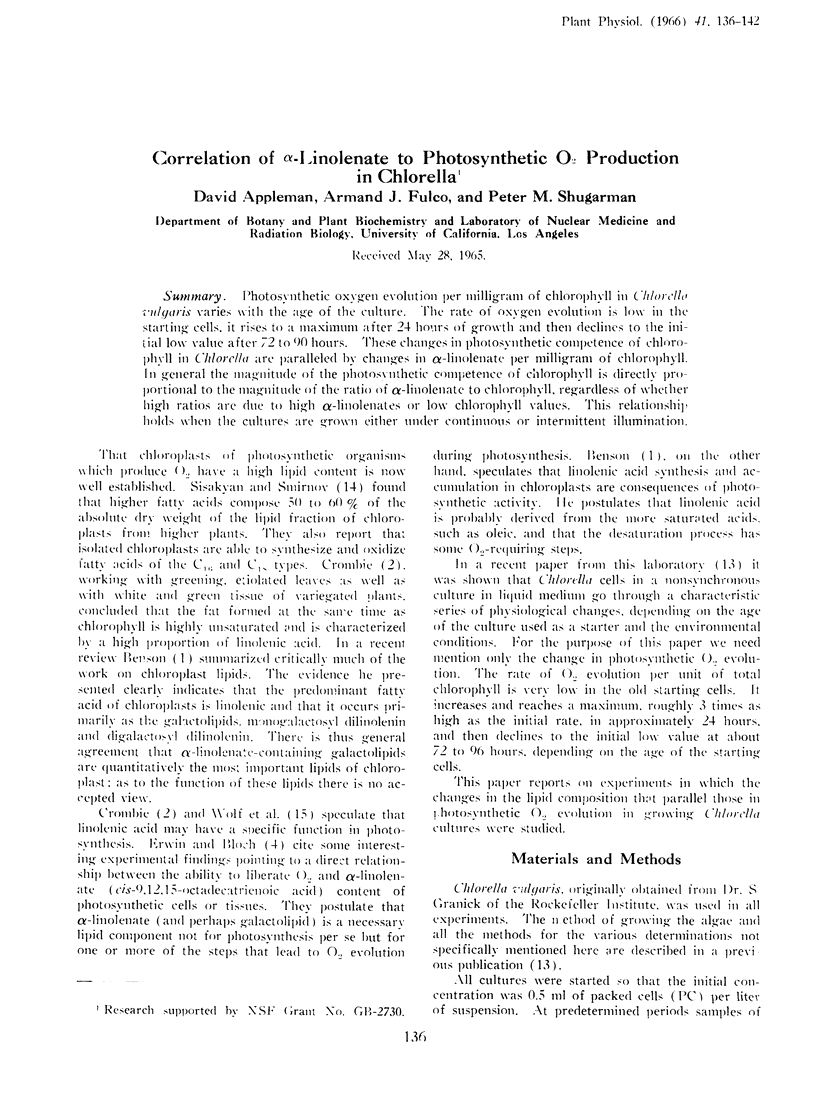
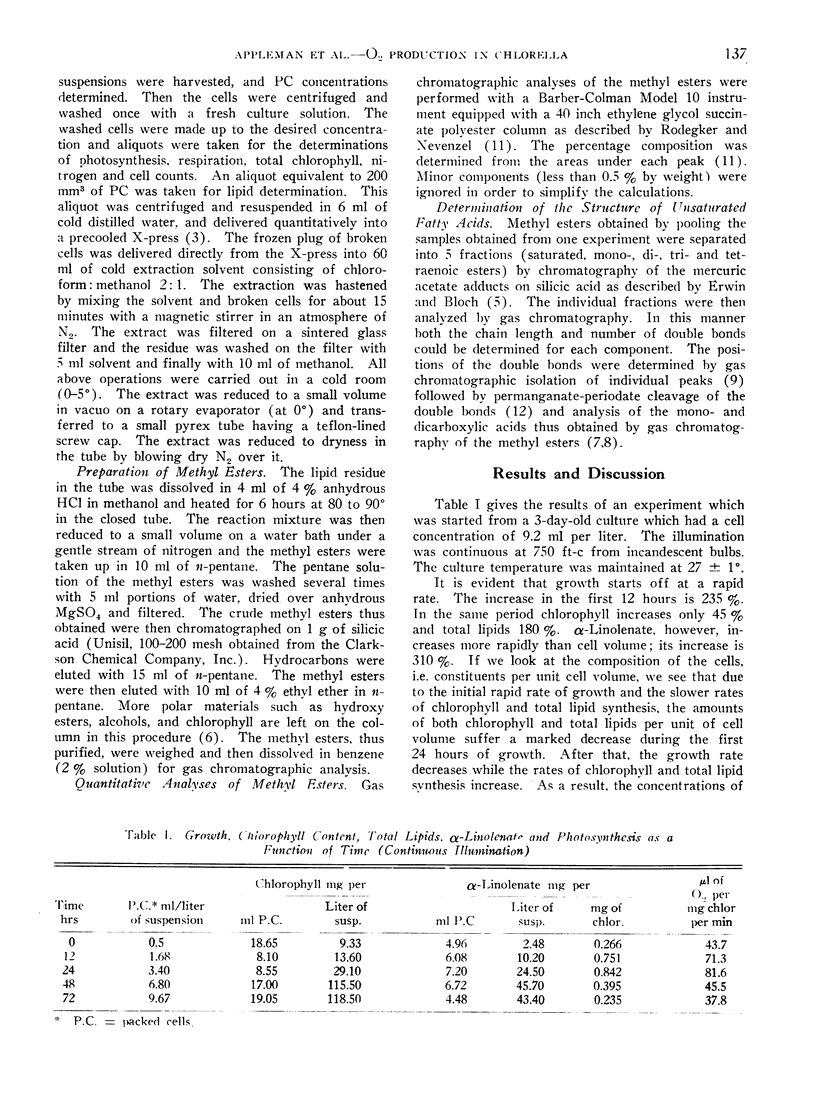
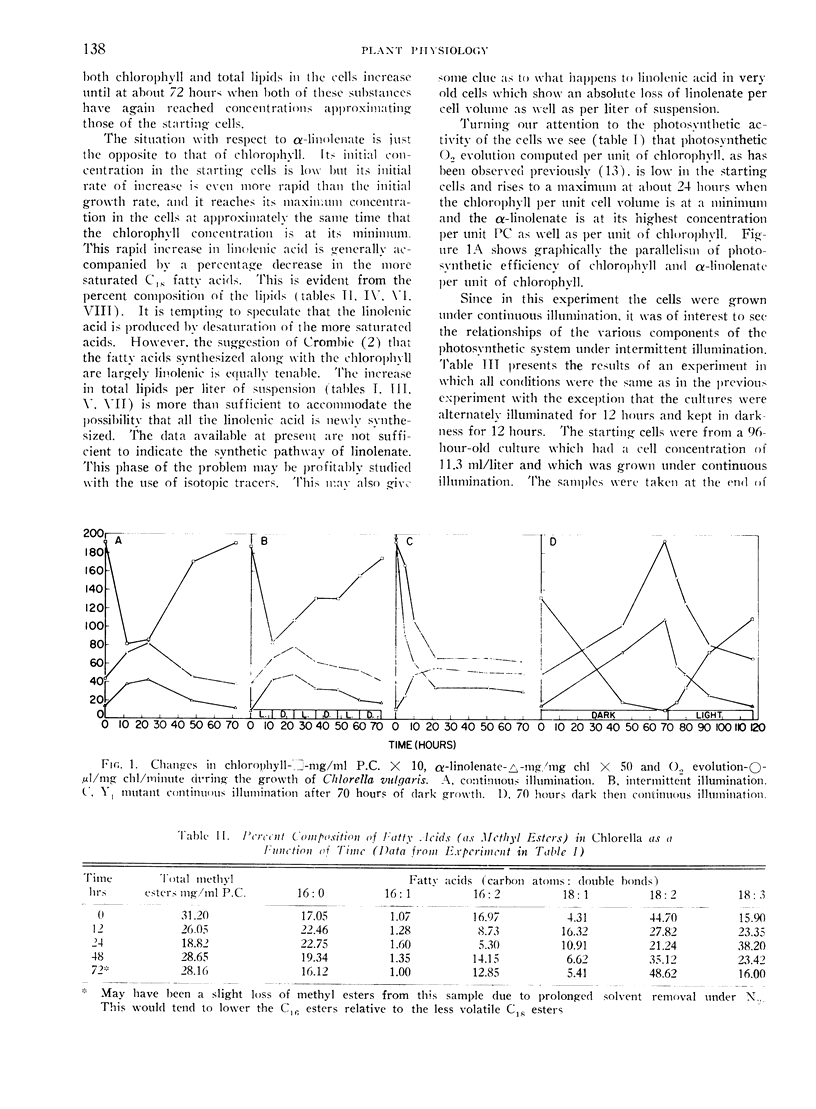

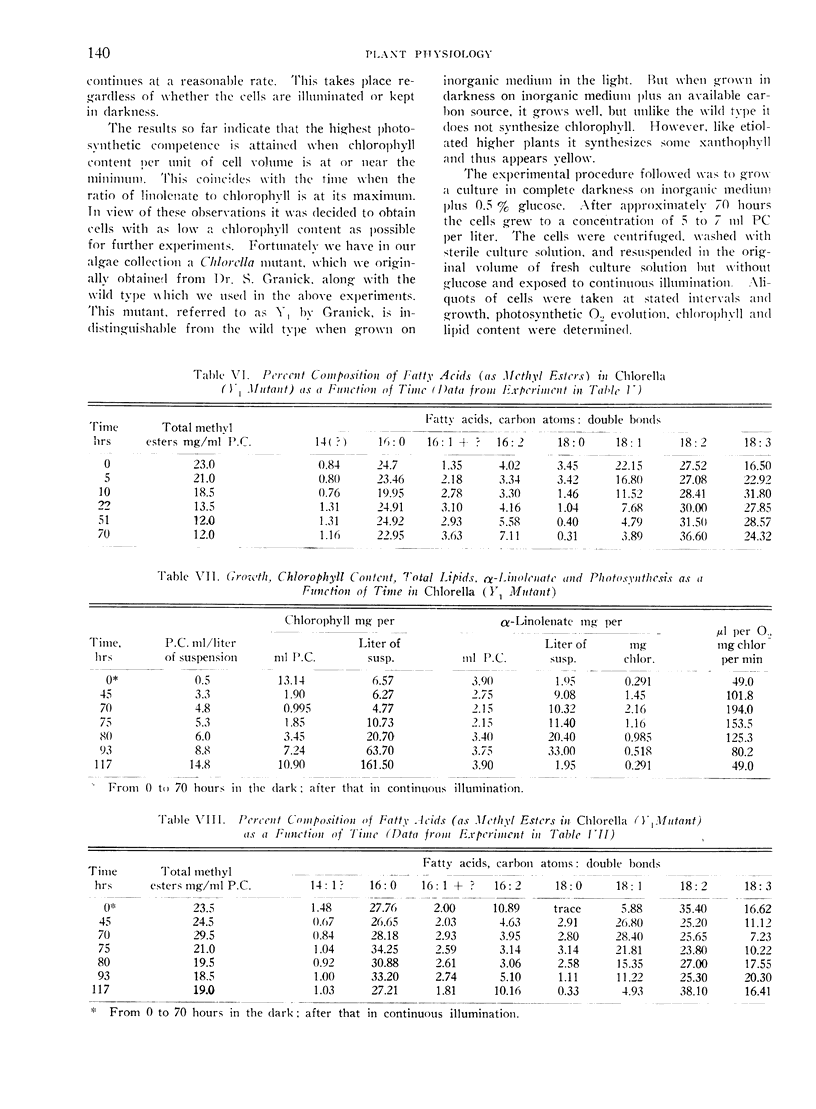

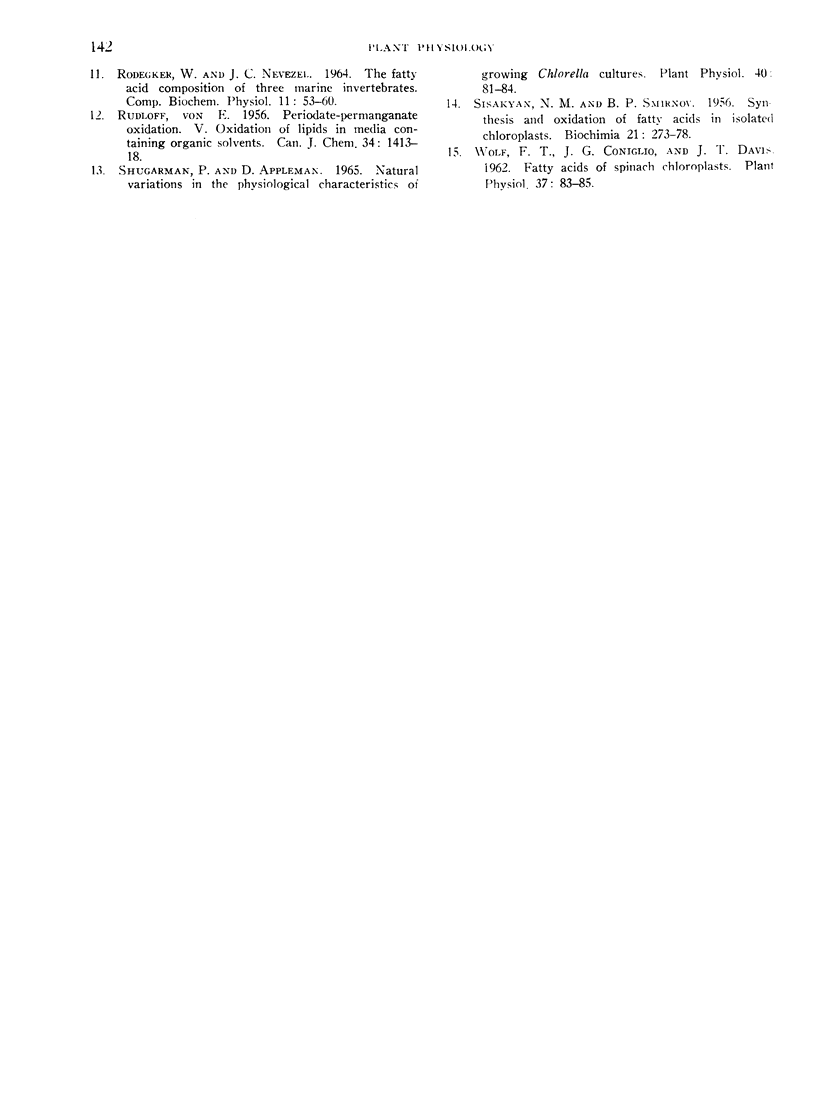
Selected References
These references are in PubMed. This may not be the complete list of references from this article.
- ERWIN J., BLOCH K. BIOSYNTHESIS OF UNSATURATED FATTY ACIDS IN MICROORGANISMS. Science. 1964 Mar 6;143(3610):1006–1012. doi: 10.1126/science.143.3610.1006. [DOI] [PubMed] [Google Scholar]
- FULCO A. J., LEVY R., BLOCH K. THE BIOSYNTHESIS OF DELTA-9 AND DELTA-5-MONOSATURATED FATTY ACIDS BY BACTERIA. J Biol Chem. 1964 Apr;239:998–1003. [PubMed] [Google Scholar]
- GOLDFINE H., BLOCH K. On the origin of unsaturated fatty acids in clostridia. J Biol Chem. 1961 Oct;236:2596–2601. [PubMed] [Google Scholar]
- Shugarman P. M., Appleman D. Natural Variations in the Physiological Characteristics of Growing Chlorella Cultures. Plant Physiol. 1965 Jan;40(1):81–84. doi: 10.1104/pp.40.1.81. [DOI] [PMC free article] [PubMed] [Google Scholar]


